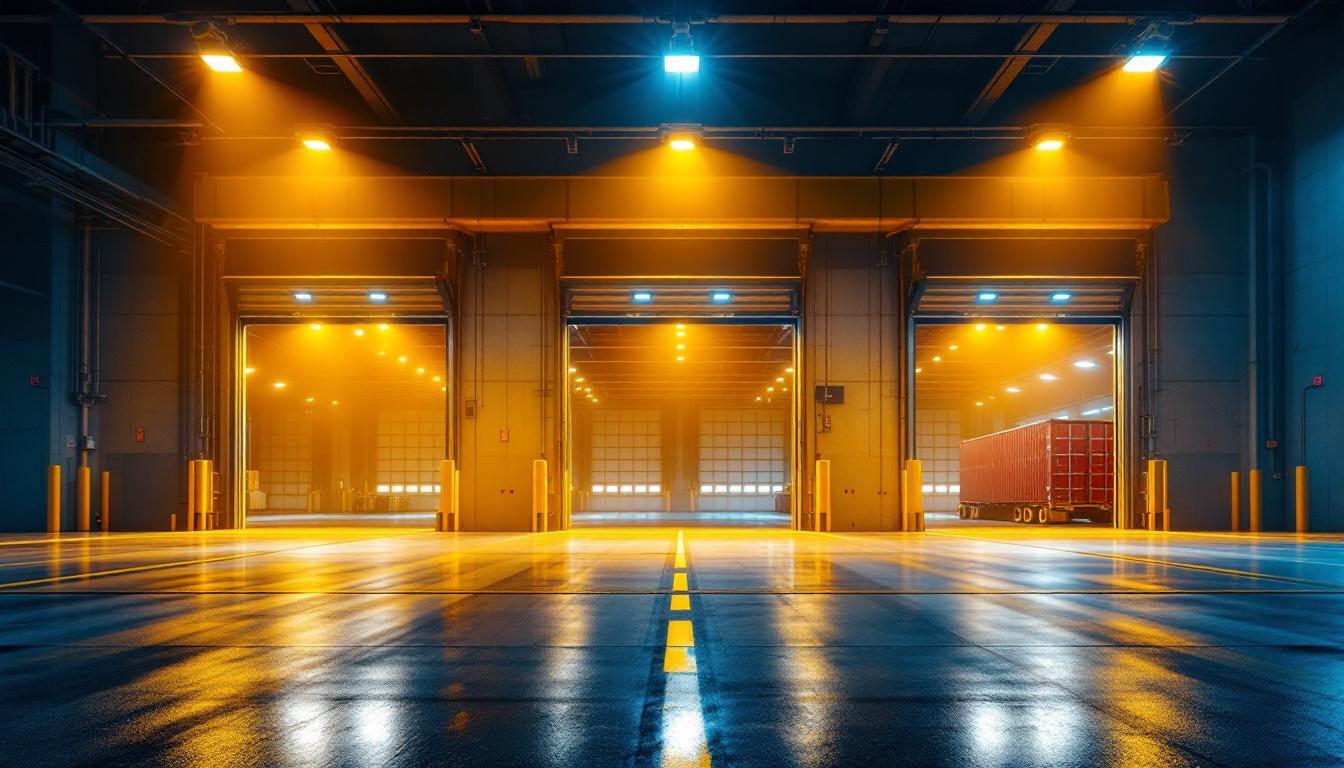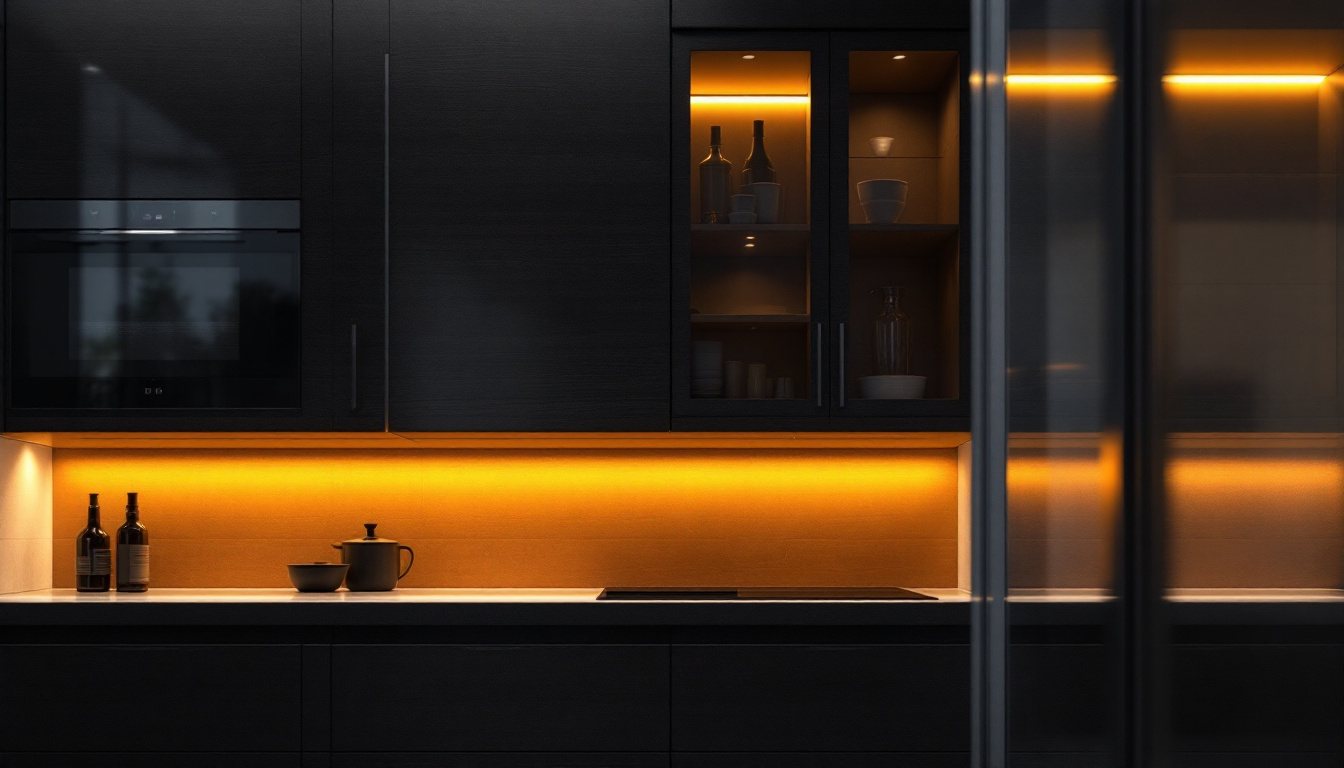
In the realm of industrial and commercial lighting, loading bay dock lights play a crucial role in ensuring safety, efficiency, and productivity. For lighting contractors, understanding the intricacies of these systems is essential for delivering optimal solutions to clients. This article delves into the key aspects of loading bay dock lights, providing a concise overview that can be absorbed in just five minutes.
Loading bay dock lights are specialized lighting fixtures designed to illuminate loading docks and shipping areas. Their primary purpose is to enhance visibility during loading and unloading operations, especially in low-light conditions or during nighttime. These lights are engineered to withstand the rigors of industrial environments, ensuring longevity and reliability. Proper lighting not only improves safety but also boosts efficiency, as workers can see clearly and navigate the area without risk of accidents or delays.
Typically, loading bay dock lights are equipped with several features that distinguish them from standard lighting solutions. They often include adjustable beams, allowing users to direct light precisely where it is needed. Many models also incorporate motion sensors, which can help conserve energy by activating lights only when movement is detected. This feature is particularly beneficial in busy loading areas where lights can be left on unnecessarily, leading to increased energy costs.
Another important feature is the ability to withstand harsh conditions. Loading bays can be exposed to dust, moisture, and extreme temperatures, making durability a critical factor in the selection of dock lights. High-quality materials and weather-resistant designs are essential for ensuring that these lights perform effectively over time. Furthermore, many dock lights are designed with shatterproof lenses and rugged housings to prevent damage from impacts or vibrations, which are common in bustling shipping environments.
There are various types of loading bay dock lights available, each designed to meet specific needs. LED dock lights are becoming increasingly popular due to their energy efficiency and long lifespan. They provide bright, clear illumination while consuming less power compared to traditional incandescent or fluorescent options. Additionally, LEDs generate less heat, which can contribute to a more comfortable working environment during hot weather conditions.
Fluorescent dock lights are another option, known for their ability to produce a broad spectrum of light. While they may not be as energy-efficient as LEDs, they can still be effective in certain applications. Their ability to illuminate large areas makes them suitable for expansive loading docks. Additionally, some contractors may opt for halogen lights, which offer a warm light and are suitable for areas requiring high-intensity illumination. These lights are often favored for their excellent color rendering capabilities, which can help workers distinguish between different cargo and materials more easily. Furthermore, advancements in lighting technology have led to hybrid solutions that combine the benefits of various types, offering customizable lighting options tailored to specific operational needs.
Proper lighting in loading docks is not just a matter of convenience; it significantly impacts safety and efficiency. Poorly lit areas can lead to accidents, injuries, and damage to goods. Therefore, ensuring adequate lighting is essential for the well-being of workers and the protection of assets.
One of the primary reasons for investing in quality dock lights is to enhance safety. Well-lit loading areas reduce the risk of accidents, such as slips, trips, and falls. Furthermore, clear visibility helps operators maneuver equipment safely, minimizing the chances of collisions or other incidents.
In addition to preventing accidents, proper lighting can deter theft and vandalism. A well-lit loading dock is less attractive to potential intruders, providing an added layer of security for businesses. The psychological effect of bright lighting can dissuade criminal activity, as it increases the likelihood of detection. Additionally, the use of motion-sensor lights can further enhance security by illuminating areas only when movement is detected, thus conserving energy while maintaining safety.
Efficient operations are vital in any logistics or warehousing environment. Loading docks that are poorly lit can slow down the loading and unloading process, leading to delays and increased operational costs. By ensuring that loading bays are well-illuminated, contractors can help businesses streamline their operations.
Moreover, good lighting can enhance worker productivity. When employees can see clearly, they can perform their tasks more effectively, reducing the time spent on each operation. This efficiency can lead to improved throughput and better overall performance for the business. Additionally, the right type of lighting can help workers identify and address issues more quickly, such as spotting damaged goods or noticing equipment malfunctions. This proactive approach not only saves time but also minimizes potential losses and enhances overall operational integrity.
Furthermore, the strategic placement of lighting fixtures can create a more organized and efficient workflow. By illuminating specific areas where workers need to focus, such as loading zones or packing stations, businesses can optimize their layout and ensure that every inch of the dock is utilized effectively. This thoughtful approach to lighting design can transform a chaotic loading dock into a streamlined hub of activity, ultimately contributing to a more productive work environment.
When selecting loading bay dock lights, several factors should be taken into account to ensure the best fit for a specific application. Understanding these considerations can help lighting contractors make informed recommendations to their clients.
The brightness of dock lights is measured in lumens, and selecting the appropriate lumen output is crucial for effective illumination. The specific requirements will vary based on the size of the loading dock and the tasks being performed. For example, a larger dock may require higher lumen outputs to ensure adequate visibility.
Color temperature is another important consideration. Measured in Kelvin, color temperature affects how the light appears. Cooler temperatures (above 5000K) provide a bright, daylight-like appearance, which can enhance visibility. Conversely, warmer temperatures (below 3000K) may create a softer ambiance but could compromise visibility in critical areas.
Dock lights come with various mounting options, including wall-mounted, ceiling-mounted, or portable designs. The choice of mounting will depend on the layout of the loading dock and the specific lighting needs. Flexibility in positioning is essential, as it allows for adjustments based on changing operational requirements.
Some dock lights also offer adjustable arms or heads, enabling users to direct light precisely where it is needed. This adaptability can be particularly beneficial in busy loading areas where tasks and equipment may vary frequently.
Once the appropriate dock lights have been selected, proper installation is crucial for performance and safety. Lighting contractors must follow best practices to ensure that the lights are installed correctly and function as intended.
Understanding the electrical requirements of dock lights is essential for a successful installation. This includes ensuring that the electrical supply matches the voltage and wattage specifications of the chosen lights. Additionally, proper wiring and circuit protection should be implemented to prevent overloads and ensure safety.
It’s also important to consider the placement of electrical outlets. Adequate access to power sources can simplify installation and maintenance, making it easier to replace bulbs or fixtures when necessary.
Lighting contractors must be aware of local regulations and standards regarding industrial lighting. Compliance with these regulations is not only a legal requirement but also ensures that the lighting system meets safety and performance benchmarks.
In many cases, there are specific guidelines regarding illumination levels, energy efficiency, and fixture placement. Familiarity with these regulations can help contractors provide solutions that are both compliant and effective.
Regular maintenance is vital for ensuring the longevity and performance of loading bay dock lights. A proactive approach can help identify issues before they become significant problems, ultimately saving time and costs for businesses.
Conducting routine inspections of dock lights can help identify any signs of wear or damage. This includes checking for burnt-out bulbs, loose wiring, or physical damage to fixtures. Early detection of these issues allows for timely repairs or replacements, minimizing downtime.
Additionally, cleaning fixtures periodically can enhance light output. Dust and debris can accumulate on light surfaces, reducing their effectiveness. A simple cleaning routine can significantly improve visibility in loading areas.
As technology continues to evolve, lighting contractors should stay informed about advancements in dock lighting solutions. Upgrading to newer, more efficient models can provide improved performance and energy savings for clients. For instance, transitioning from traditional lighting to LED options can result in lower energy bills and reduced maintenance costs.
Encouraging clients to consider upgrades not only benefits their operations but also positions contractors as knowledgeable professionals who are committed to providing the best solutions available.
Loading bay dock lights are a critical component of industrial and commercial operations, impacting both safety and efficiency. For lighting contractors, understanding the features, types, and installation considerations of these lights is essential for delivering effective solutions to clients.
By focusing on the importance of proper lighting, considering key factors during selection, and emphasizing maintenance, contractors can ensure that loading bays are well-equipped to handle the demands of modern logistics. Staying informed about advancements in technology and compliance with regulations further enhances the ability to provide top-notch service, ultimately leading to satisfied clients and successful projects.
Ready to elevate your lighting solutions and enhance the safety and efficiency of your loading bay projects? Look no further than LumenWholesale. Our commitment to providing contractors with the highest quality, spec-grade lighting products at unbeatable wholesale prices sets us apart. With LumenWholesale, you can access an extensive selection of reliable, high-performance lighting without the burden of inflated markups. Plus, our hassle-free bulk buying options and free shipping mean you get the premium lighting you need at the best value — without hidden fees or compromises. Don’t settle for less; choose LumenWholesale for quality, affordability, and convenience. Wholesale Lighting at the Best Value is just a click away.

Discover the must-have tools and techniques for lighting contractors to master the art of floating ceiling lighting.

Discover essential insights into electrical power cords tailored for lighting contractors.

Discover the often-overlooked aspects of lighting projects that even seasoned contractors miss.

Discover why LED tape cabinet lighting is becoming a must-have for lighting contractors.